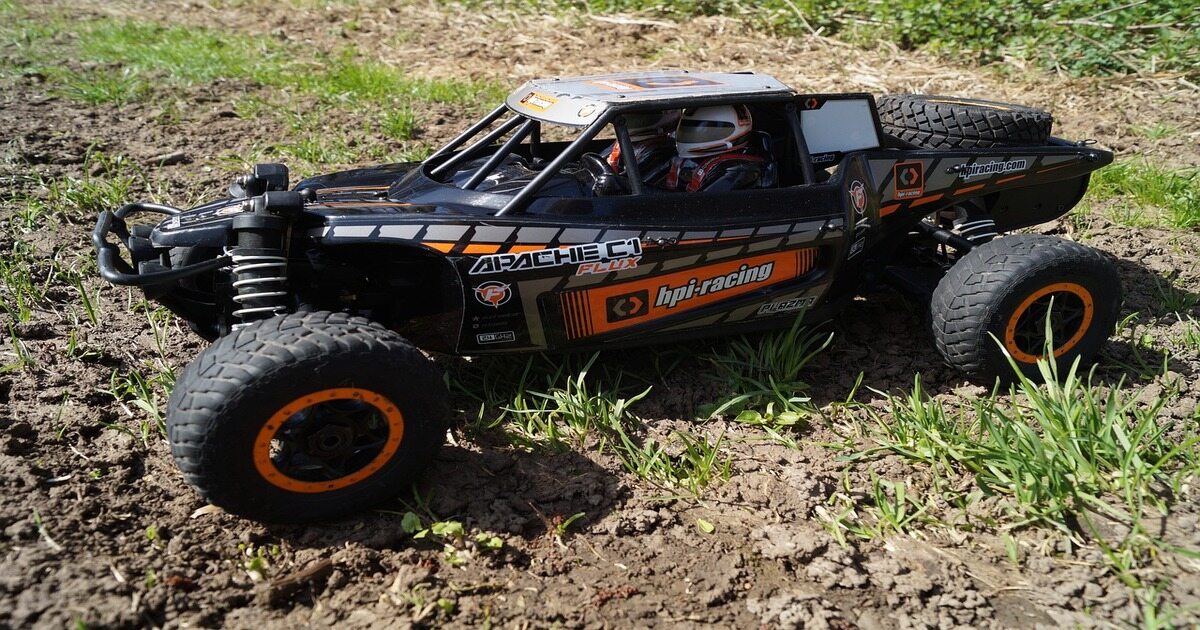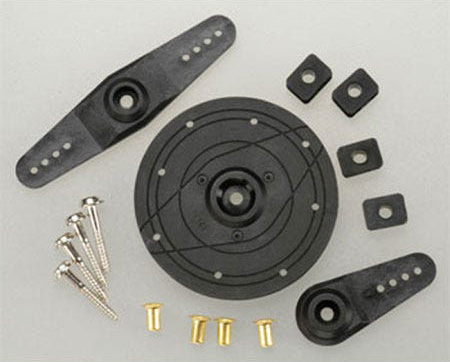The Difference Between a Remote-Controlled and Radio-Controlled Car
Date Posted:24 June 2024

If you were to talk to a radio-controlled vehicle enthusiast, they would never say that a radio-controlled car and a remote-controlled car are the same. On the other hand, if you were to talk to a person who's not into the hobby, they would likely say it’s the same thing. Even the abbreviation is the same - for some people, RC car stand exclusively for radio control, while for others, it means both radio and remote control.
So who is correct? Is there a difference between remote-controlled and radio-controlled cars? The simple answer is - yes, there are many differences between remote- and radio-controlled cars. Let’s explore them.
The Basic Difference Between a Remote Control and a Radio-Controlled Car
Both remote control and radio-controlled cars can be controlled from a distance, i.e., remotely, so both are technically remote control vehicles. The primary differentiation between remote control and radio control cars is how the controller communicates signals to the receiver that is in the car, that is, how you control the car. When people talk about remote-controlled cars, they are talking about cars that use an infrared signal (IR) or maybe even a wire (although these types are very rare nowadays) to communicate.
When they talk about radio-controlled cars, they are talking about cars where the transmitter/controller and receiver communicate via radio signals. As a result, remote control cars have a limited range, often requiring the user to stay relatively close to the vehicle, and the vehicle can only interpret simple commands. On the other hand, the range of radio-controlled cars can vary from a few hundred metres to several kilometres, depending on the transmitter and receiver strength, and they can decode more complex signals.
This basic difference severely impacts how these cars can be used in practice. In addition to that, the other components of radio-controlled cars are typically (in truth, almost always) much more complex and sophisticated than those of remote-controlled cars. So let’s delve a bit deeper into that.
The Mechanical Differences
Both remote control and radio-controlled cars have three essential components: transmitters, receivers, and power sources. As we mentioned, for remote-controlled cars, the transmitter is often handheld and uses IR signals to communicate with the receiver that is in the car. The controls you can give to a remote control car are basic forward, backward, left, and right movements. Standard AA or AAA batteries typically power these cars. Radio-controlled cars also have transmitters, receivers, and power sources, but they are much more complex.
The transmitter operates on specific radio frequencies (e.g., 27 MHz, 49 MHz, and 2.4 GHz), and the receiver can decode complex signals. Unlike remote-controlled cars, one of the essential components of radio-controlled cars is an electronic speed control (ESC) unit. The ESC is an electronic circuit that offers precise control over an electric motor; this is the same system that is used in full-sized electric vehicles.
In radio-controlled cars, the ESC can be a separate unit or part of an ESC/receiver combo. This enables radio-controlled cars to have advanced functionalities like proportional steering and throttle control for precise handling. When it comes to the power source, there are two types of RC cars - those that use batteries to power an electric motor (which can be brushed and brushless), and those that have a nitro engine. On top of that, radio-controlled cars have customisable transmissions, suspension, and handling components.

Enthusiasts often replace and fine-tune components like gears, drive shafts, and shocks to get the most out of their radio-controlled cars. Finally, remote-controlled cars are miniature vehicles, while radio-controlled car scales and sizes range from miniature to metres long and wide. For instance, a popular model, the 1:8 VRX Cobra RH-818, is 485mm long, 340mm wide, and 190mm high, and can reach speeds of 55 - 60 km/h.
Naturally, all of these mechanical differences determine how remote-control and radio-controlled cars are used.
How They Are Used
If you’ve ever seen an RC buggy track race, an RC pattern flying competition, or RC model boat racing, these are all done by radio-controlled vehicles. Radio-controlled vehicles are hobby-grade models designed for competitive racing, stunts, and outdoor use. They require experience to be utilised properly, and RC car maintenance is nothing to be scoffed at.
These cars are even nicknamed Ankle Breakers due to the injuries some drivers have suffered. These vehicles are not children’s toys, and you won’t be able to buy them in regular shops. In short, RC car racing is a hobby and a sport and should be treated as such.
On the other hand, remote-controlled cars are toys, and you will easily find them in toy stores and regular shops. They are much cheaper than radio-controlled cars and are perfectly suitable for children, so you don’t need to spend too much time thinking about the type and model you are getting. Like with all other toys, you use them however you see fit.
Interested in Radio-Controlled Cars?
If you are interested in driving a radio-controlled car, you will have trouble finding one in a regular shop, but you can find the ideal one for you at RCMA Model & Hobby Shop. Our collection of RC cars includes many types, makes, and models, suitable for both beginners and experienced drivers. You can choose between:
We also offer RC car parts, batteries and chargers, and many other types of radio-controlled vehicles - from RC planes to RC boats. So find what you need, place your order online, and we will deliver your vehicle right to your address. If you have any questions or need assistance, feel free to contact us, we will respond as soon as possible.





